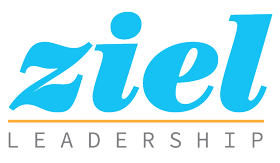Leaping, Learning & Leadership Development
Leadership development and learning for a successful workplace requires a great deal of leaping. Whether it is to grow a more inclusive mindset to increase collaboration, accountability, and innovation through diversity. Each of these requires people to be open, authentic and accountable. These are only possible when we are willing to be vulnerable, to take a risk, to make a leap.
Don’t Grab The Rail
When I went bungie jumping, I went for it, as soon as I was rigged up. I sprinted across the platform as fast as I could, wanting to jump before I could think. I grabbed a rail to pull myself over the edge when somebody yelled, “Stop! You can’t grab the rail!”
Thank god, I did stop.
But then, I stopped for a while. My brain caught up to my body — and it tried to keep me from jumping all together.
And we all waited as I stood there trying to find the courage to jump.
Bungie Jumping Into Leadership Development
Standing on the ledge, all I could see were the dangers. The natural fight, flee or freeze response kicked in. Fighting was out, though for a brief moment I did consider punching the guy that told me to stop. Fleeing was not a socially acceptable option, though as time passed, I did consider a trip back down the steps. Freezing, in that moment, was all I could muster.
Leaping takes trust. In that case, it was trust in the mechanics of the harness, bungie cord and safety net. In life, leaping is more often trust in myself, in my friends, family, customers, colleagues and peers. Safety is trust that I will be ok. Safety is trust that someone will help me recover if I fall or fail. Safety and trust are a belief that I will be ok in the face of this risks — whatever this risk might be.
Want to learn more about how to encourage leaping at your workplace? Give me a shout!
So, what’s the connection between bungie jumping and the workplace? A lot, they are simply different types of leaping. More specifically, different types of threats with the same threat response, fighting, fleeing or freezing. In many ways, leaping is learning and leaping deepens relationships — that leads to leadership development. When people stop leaping, taking risks, they stop learning and they inhibit strengthening relationships.
Learning Through Threats For Leadership Development
People are wired to scan the environment for potential threats and move towards safety. We look for threats to our physical body, our sense of being, and our sense of belonging. In general, it’s easier to identify physical threats. The threats we find in the workplace — to our sense of being and sense of belonging — are abstract which makes it harder to identify them, but overcoming them creates leadership development. Let me define them.
- Our sense of being is the collection of lenses through which we see and interpret the world around us. It informs how we judge things as good, bad, right or wrong. We acquire our sense of being as we learn “how the world works” from others and through our experiences.
- Our sense of belonging is accumulated through our connections to various communities – where we grew up, where we live(d), the places we were educated, where we work, the groups we belong to. We are wired for community – to belong. When confronted with a threat to my sense of being or sense of belonging, my natural response is to fight, flee or freeze. Unless I feel safe, it is unnatural to do anything else.
These threats to our sense of being and sense of belonging are a big deal in the workplace. When I facilitate workshops, I often ask people to introduce themselves. They’ll say – “I’m an engineer.” “I’m a project manager.” “I’m a Director, VP, Welder, or Assembler…” The key is “I’m a…” They are not just saying what they do, they say who they are. They don’t say “I do…”, they say “I am.” They’ll always follow that with their functional group, or facility name. It’s not just where they work, it’s where they belong. These things are not separate from us. They are a part of us.
It is also helpful to consider that who I am and my place in the world keep me and my family safe. Go back 500 or so years. Whether it’s a tribe or a village, my value was often rooted in my contributions. “I’m a” hunter, healer, baker, or blacksmith. “I’m a…” Being exiled from my tribe or village meant certain death. Threats to our sense of being and sense of belonging might seem abstract but they feel catastrophic. What’s more, when our sense of being or sense of belonging are injured, we describe those injuries in terms of physical pain with words like – broken, ripped/torn, crushed etc…
When I put my world view at risk, I am open to new ways of seeing and interpreting the world. When I put a relationship at risk, I open doors of forgiveness, grace, and gratitude. When I leap, I learn and deepen relationships which makes me a stronger leader and a better employee. It is only when I do what is unnatural, in the natural course of life, that I am capable of growing myself, my relationships, and others. This kind of leadership development makes for a stronger, healthier and happier workplace.
